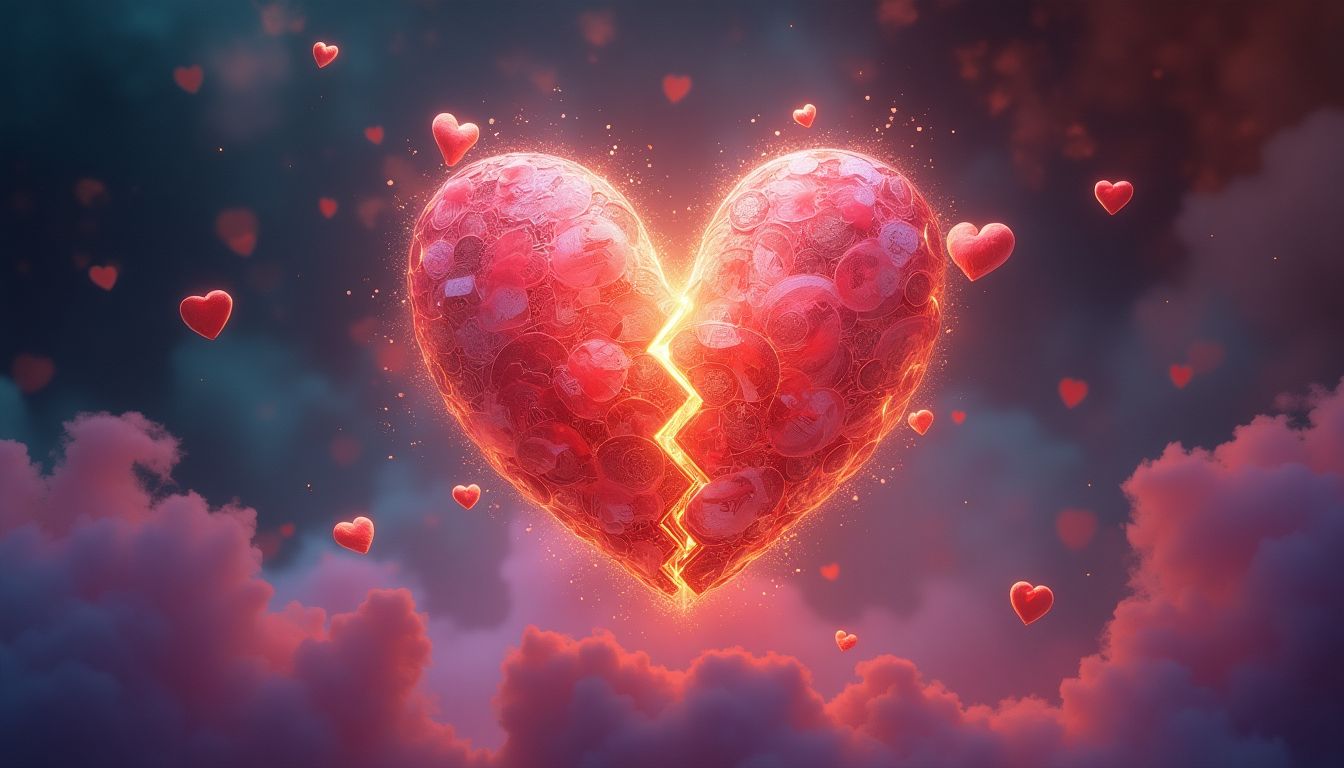Ah, the heart symbol! Would you believe this elegant little emblem, so lovingly entwined in our modern interpretations of romance, actually has a history as tangled as a soap opera? As you may have guessed, its origins and significance run deeper than your average Valentine's Day card. In this unraveling tale of human expression, let's dive into the heart symbol's storied past, its transformation into a global signifier of love, and an irreverent look at its journey through time.
Thanks to a brilliant video by the YouTube channel Be Smart, we get a front-row seat to the heart symbol's evolution. If you've ever wondered why a shape that could pass for a spade in a game of cards speaks volumes of amor, buckle up. It's time for a fascinating meander through history, laden with hilarity and surprise!
From Coins to Cupid: The Mysterious Beginnings of the Heart Symbol
In our exploration of this aesthetic anomaly, we first encounter the ideogram—a visual used to symbolically represent an object. Mark Twain once quipped, "History doesn't repeat itself, but it often rhymes," and it seems even our beloved icons are subject to the whims and poetry of time. Apparently, 3,000-year-old coins featured an emblem that echoed the modern heart shape. Intriguingly, it represented a now-extinct herb called silphium. This ancient seedpod had more going for it than its palatable taste—it was esteemed as an essential spice and possible medicinal gonna-tan-your-lickety-split aphrodisiac.
Meanwhile, in Japan, sharp-eyed warriors employed the heart icon on weapons as a salute to bravery. It's a peculiar juxtaposition—bravery and serenading—one that highlights humanity's dual appreciation for both valor and vulnerability. One could imagine these warriors sending emoji hearts on their arrows long before text messaging was a glimmer in the eye of modern communication.
Turning westward, early physicians had a whimsical view of anatomy, postulating that the heart was where the soul resided, rather than our knowledge today of just an organ pumping precious oxygen juice through our veins. Perhaps it was through this fanciful lens that the heart's reputation as the residence of love and sentiment began its meandering course.
Depictions, Dancing, and Doodles: The Heart's Rise Through Art
Cupid's Revenge or Fortuitous Feathers? - Fast forward to the 14th century: a whimsical depiction of Cupid prancing about, riding a frisk-decorated bird with splattering hearts captured imaginations. By the 1400s, the heart symbol acquired the dimpled, pleasingly familiar shape we recognize today, perhaps clumsily attributed to Renaissance artists' romantic sensibilities or—dare I say—creative indulgence?
As we advanced into the 1800s, Valentine's Day emerged, a savvy marketing maven touted as a day of passion and greeting cards. The heart shape harmonized perfectly, lacing its way through written words and gestures meant to woo the recipients and invigorate the economy, one rhyming line of tenderness at a time.
Our dear heart went viral long before pandemics were a thing, basking in the limelight of idiomatic expressions and perennial gifts as it snuggled its way into the lexicon of love that we hold dear today.
From Icon to Verb: When the Heart Goes "New York City"
Our climactic moment of literal expression came from Milton Glaser's legendary contribution to city branding. In 1977, his "I ❤️ NY" logo made us ponder whether it was feasible to heart a place as much as a person. Nowadays, we "heart" many things—a casual way to indicate preference and delight, unburdened by heavy-handed phrases or commitment. Let's admit, though: with social media, Glaser's design achieved a vernacular status, perhaps causing linguistic teetering between logo and love.
The Cultural Significance and Why It Matters
So why does this motif, seemingly bizarre and abstract upon close inspection, remain a colossal icon in art, advertising, and communication? It's a cultural representation wrapped snugly in the proverbial tapeworm of emotion, hugging the constructs of our understandable yet messy perceptions of love. From human vulnerability to bravery, from the physical to the metaphorical, it uncritically waves the flag of abstraction that speaks to our desire for connection and simplicity in communication.
When one considers all these factors intertwined—historical quirks, shimmering symbols, an echo of bold declarations, and a touch of artistic rendition—the heart emerges not just as a symbol but as a narrative tapestry. Sure, the biology of emotion may still confound us, but at least we have a charming emblem to summit this cerebral hill.
What do you think? Are we too swift to attach emotions to arbitrary symbols? Or perhaps this emblem's virality signifies our craving for connection in an increasingly complex world? I invite you to share your thoughts in the comments. Join us as citizens of the "Shining City on the Web" and dive deeper into this conversation. Let's unravel the past while charting future symbols together. Do we heart this journey? Oh, indeed!
Wait! There's more...check out our gripping short story that continues the journey: The Heart of Atlantis
Disclaimer: This article may contain affiliate links. If you click on these links and make a purchase, we may receive a commission at no additional cost to you. Our recommendations and reviews are always independent and objective, aiming to provide you with the best information and resources.
Get Exclusive Stories, Photos, Art & Offers - Subscribe Today!

























Post Comment
You must be logged in to post a comment.